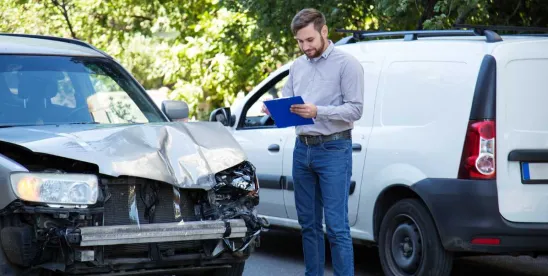In a setback for automakers, the Patent Trial and Appeal Board (PTAB) has once again upheld the validity of Neo Wireless’s U.S. Patent No. 10,447,450, rejecting challenges brought by several major automakers. The most recent decision, Ford Motor Co. v. Neo Wireless (Sept. 3, 2025), follows last year’s similar outcome in American Honda, GM, Nissan & Tesla v. Neo Wireless (Nov. 1, 2024).
For in-house counsel and litigators navigating patent risks in the automotive and wireless connectivity space, these decisions provide important guidance on claim construction, the evidentiary burdens of Inter Partes Review (IPR), and the continuing role of the PTAB in high-stakes patent litigation.
Background on the ’450 Patent
The ’450 Patent is or has been involved in at least 23 ongoing or terminated district court proceedings. The patent issued in 2019 but claims priority back to 2005. It purports to address a core problem in wireless networks: excessive overhead control in multi-carrier wireless communication networks that reduces bandwidth efficiency, particularly in systems based on IEEE 802.16. By introducing “time-frequency resources” and application-specific zones, the patent is alleged to improve spectral efficiency—a concept with broad implications for modern vehicle connectivity.
The November 2024 Final Decision: Broad Challenge Falls Short
In September 2022, Volkswagen filed a petition for IPR challenging all 18 claims of the ’450 Patent, which was later joined by Honda, GM, Nissan, and Tesla. Volkswagen and Patent Owner entered into a settlement and filed a Joint Motion to Terminate the proceeding as to Volkswagen, which the Board granted.
The petition argued obviousness under pre-AIA §103 based on multiple prior art references, including publications by Vijayan, Laroia, Wu, and Choi.
This first IPR turned on claim construction. Central to the challenge was the meaning of “starting time‑frequency coordinate” in the claims. The Board sided with the patent owner and adopted a construction that the term cannot be disclosed by teachings of separate time and frequency coordinates. This decision was based in part on the Board’s decision denying institution in a prior IPR proceeding, which constitutes a disclaimer that was binding on this proceeding, and on its determination that this construction is consistent with the specification.
The PTAB found that Petitioners’ references defined the start of a segment by stating a starting subband and a starting symbol period—that is, separate frequency and time values—which the Board decided does not meet the claim term as construed. Applying this construction, the PTAB held in its Final Written Decision (FWD) that Petitioners failed to prove unpatentability of claims 1–18.
This result was an important win for Neo Wireless, preserving the entire patent, pending appeals and further challenges. Petitioner appeals were filed at the CAFC in January 2025, so this case is not over yet.
The September 2025 Decision: Narrower Challenge, Same Result
Six months later, in March of 2023, Ford (later joined by GM and Nissan) filed a new IPR petition targeting only claims 7 and 11. The petition cited Park and IEEE 802.16-2004 as disclosing the limitations of claim7.
The dispute again turned on claim construction. Here, the parties disputed the meaning of the term “mobile device” as recited in the claims. Neo argued that the “mobile device” is capable of performing the claimed limitations only while the device is in motion. In contrast, Petitioners argued that the term encompassed devices that can communicate when stationary.
After considering the parties’ arguments and relevant expert testimony, the Board concluded that the IEEE 802.16-2004 the combination of Park and IEEE 802.16-2004 does not teach or suggest a “mobile device” as construed. Thus, the PTAB once again upheld the patent, finding that Petitioner failed to establish by a preponderance of the evidence that the challenged claims are unpatentable.
While appeals have yet to be filed from this second IPR, that deadline has not yet passed. Absent a settlement, appeals, and perhaps a motion for reconsideration, are almost certain to follow.
Why These Cases Matter
First, as patent litigators know very well, claim construction is often outcome determinative. The ‘wrong’ construction can foreclose (or open up) avenues for the assertion of prior art, and it can likewise open (or close) the door to infringement exposure. Claim construction in an IPR proceeding can be just as critical as in district court litigation. Strategically, petitioners typically seek a broader interpretation, that is still inline with their non-infringement positions, while patent owners often argue for narrower constructions to avoid the asserted grounds while attempting to preserve their infringement position.
Here, in both proceedings as noted above, the Board adopted narrowing constructions of key limitations and then held Petitioners to those narrower constructions. These decisions underscore the importance of front‑loading claim scope analysis before committing to IPR petitions. While not every case requires specific constructions to be asserted in the Petition, the issues need to be considered carefully before being satisfied with crafting grounds based on ordinary meaning alone.
Second, “close” is not close enough when it comes to prior art mapping. References that may appear at a high level to teach the claim limitations can fail based on subtle differences. In practice, that means invalidity development should pressure‑test the references against the claims and against possible narrowing constructions. Slight differences in claim language cannot be ignored and every word in the claims can give the patent owner an opening to distinguish the references. Where the art does not line up, Petitioner needs to search deeper or consider whether the IPR challenge is a viable part of their strategy.
Third, approaching an IPR or EPR with weak references can strengthen the patent owner’s leverage in parallel district court litigation and in licensing negotiations. In the November 2024 FWD, the Board entered judgment that petitioners had not established any claims unpatentable, and in the September 2025 FWD, the Board reached the same bottom line as to claims 7 and 11. Estoppel provisions can limit the Petitioner’s ability to raise prior art challenges in the district court, especially with respect to patents and printed publications. Furthermore, having the Patent Office uphold the claims, especially in multiple proceedings, makes it much harder to convince a jury of invalidity. These factors collectively raise the costs of a defense and increase settlement pressure for accused infringers.
Fourth, defendants should look for prior art, such as device prior art, that is not subject to the estoppel provisions associated with the IPR proceedings. This, along with other grounds of invalidity and ineligibility, give the defendants a lifeline for challenging the patent should the IPR challenge fail. This keeps an invalidity card in defendants’ hand, maintaining that avenue of defense, and the associated leverage it provides for negotiating a more favorable settlement.
Finally, effective coordination between PTAB and district court strategies remains critical. Petitioners must carefully evaluate whether to pursue a broader construction—thereby exposing the claim to prior-art attacks—or a narrower construction, which generally strengthens arguments for non-infringement. Consistency in claim construction across PTAB and district court proceedings remains paramount to avoid undermining credibility. Therefore, IPR and litigation claim-construction strategies need to be weighed and aligned to support both invalidity and non‑infringement themes throughout all phases.



 />i
/>i

